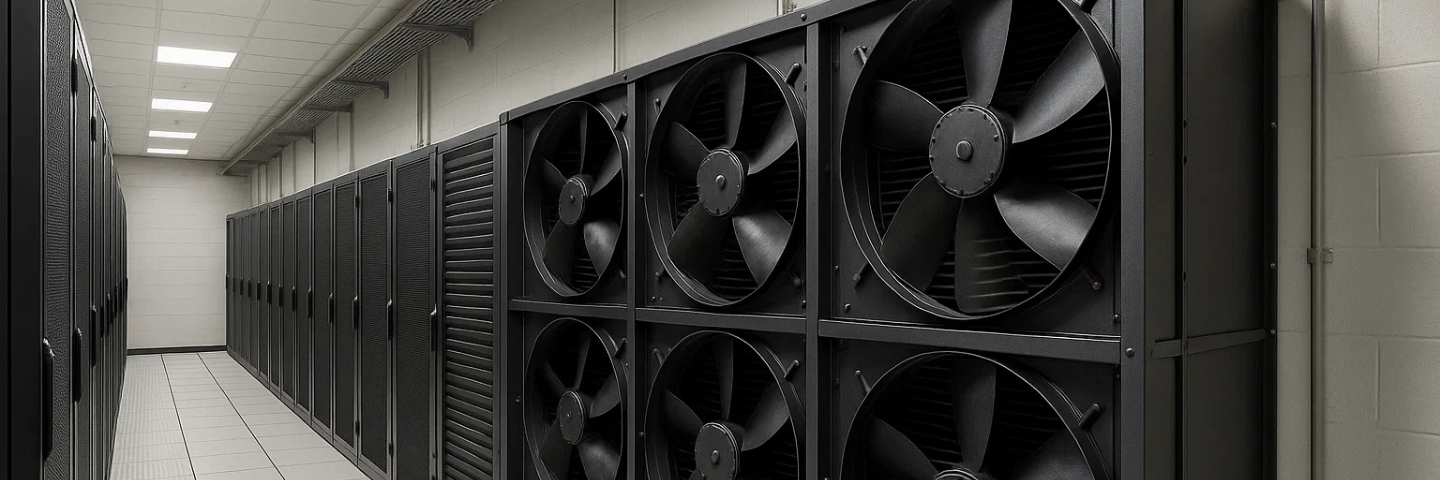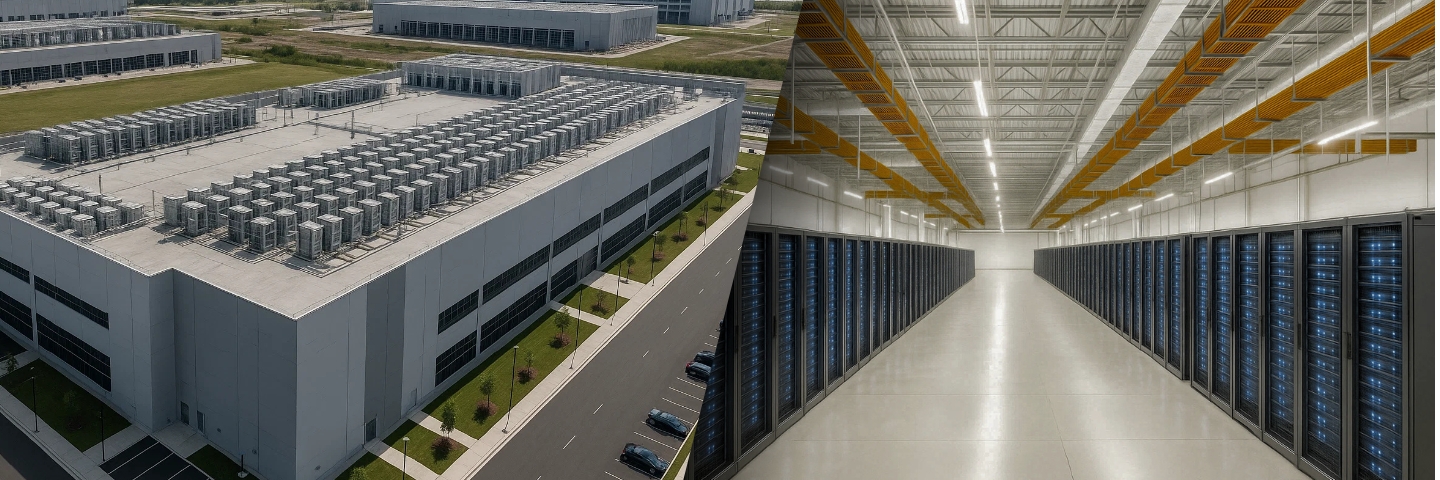What Is Fan Wall Cooling? Advantages, Challenges, and Use Cases

What Is Fan Wall Cooling?
Fan wall cooling, sometimes called a “cool wall” system, is a high-efficiency, centralized airflow solution where an entire wall — typically at the rear or one side of the data hall — is dedicated to housing large banks of fans and heat exchangers. Instead of distributing cooling units across the room, a fan wall system delivers uniform, large-volume airflow across the entire white space, either in a pressurized plenum or via open hall ventilation, depending on design.
Fan wall cooling systems are typically integrated with chilled water coils and can be part of an air-side economization system or linked to mechanical cooling loops. The main concept: instead of pushing cooling into rows or aisles, create a climate-controlled space where the entire room is treated as a uniform thermal environment.
How It Works
The fan wall draws in return air from the hot aisle or from the rear of the room, passes it through chilled water coils to cool it down, and then redistributes the conditioned air back into the room.
Airflow is typically managed by EC (electronically commutated) fans, which are energy-efficient and support variable speed operation. These fans can be grouped into zones and managed via the building management system (BMS) to adjust for changes in thermal load or floor plan layout.
Key Advantages
- Uniform Air Distribution: Fan wall systems provide even, consistent airflow across the entire room.
- High Energy Efficiency: EC fans and variable speed controls allow the system lowering power consumption.
- Serviceability: All cooling components are centralized at the wall, outside the IT row. Maintenance can often be performed without entering the IT area.
- Space Optimization: With cooling shifted to the wall, more space is available for racks and IT gear. No need for cooling units within rows or across the floor.
- Scalable Design: Fan walls can be configured to support staged buildouts, allowing operators to expand capacity over time as demand grows.
- Ideal for Slab-Based Designs: No need for a raised floor, which simplifies construction and reduces capital costs.
Considerations and Limitations
Despite its benefits, fan wall cooling is not suitable for all environments and comes with certain trade-offs:
- Large Footprint Required: The wall itself must be dedicated entirely to the fan array and cooling coils, which reduces usable wall space.
- Best for Uniform Loads: The system works best when thermal loads are evenly distributed across the room. Localized high-density areas may still require supplemental cooling.
- Limited Airflow Control at Rack Level: Since airflow is delivered uniformly, there’s less granularity compared to row-based or rack-based systems.
- High Initial Design Complexity: Proper airflow modeling and room design are critical to ensure performance. A poorly designed fan wall system can lead to under- or overcooling in certain zones.
- Chilled Water Infrastructure Needed: Like other advanced cooling systems, fan wall cooling typically requires a well-designed chilled water loop and appropriate control systems.
Best Fit Use Cases

- Large-Scale Colocation and Hyperscale Facilities: Where uniform density and centralized operations make fan wall systems cost-effective and operationally efficient.
- Slab-Based New Builds: Ideal for modern construction without raised floors.
- Facilities with High Availability Demands: Centralized maintenance and reduced intrusion into IT rows make the system attractive for uptime-sensitive environments.
Conclusion
Fan wall cooling offers a powerful alternative to traditional and distributed cooling systems, especially in large-scale and purpose-built data centers. Its uniform airflow delivery, centralized maintenance, and scalability make it an attractive choice for operators looking to improve cooling efficiency and simplify their thermal infrastructure.
However, it requires careful planning, strong airflow design, and works best when the thermal load is predictable and spread out. For these reasons, it can be a go-to choice in large environments — especially where raised floors are no longer part of the design.
























 Canada
Canada
 Latin America (English)
Latin America (English)
 Latin America (Espanol)
Latin America (Espanol)
 USA
USA
 China
China
 India
India
 Japan
Japan
 Republic of Korea
Republic of Korea
 South East Asia (English)
South East Asia (English)
 Austria
Austria
 Belgium
Belgium
 France
France
 Germany
Germany
 Italy
Italy
 Netherlands
Netherlands
 Spain
Spain
 Switzerland
Switzerland
 Turkey
Turkey
 UK
UK
 Africa (english)
Africa (english)
 Africa (français)
Africa (français)
 Middle East (english)
Middle East (english)
 Australia
Australia
 New Zealand
New Zealand